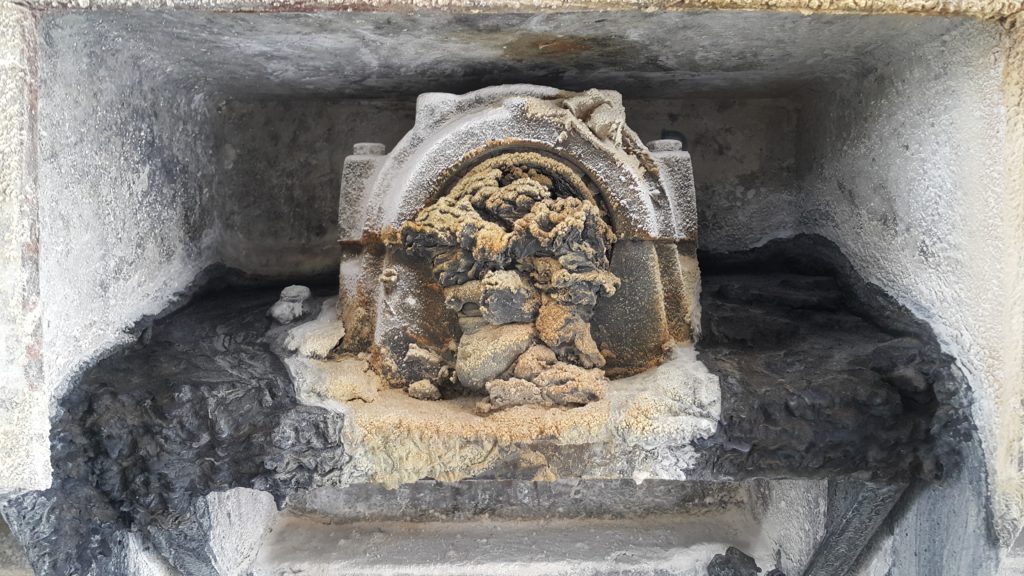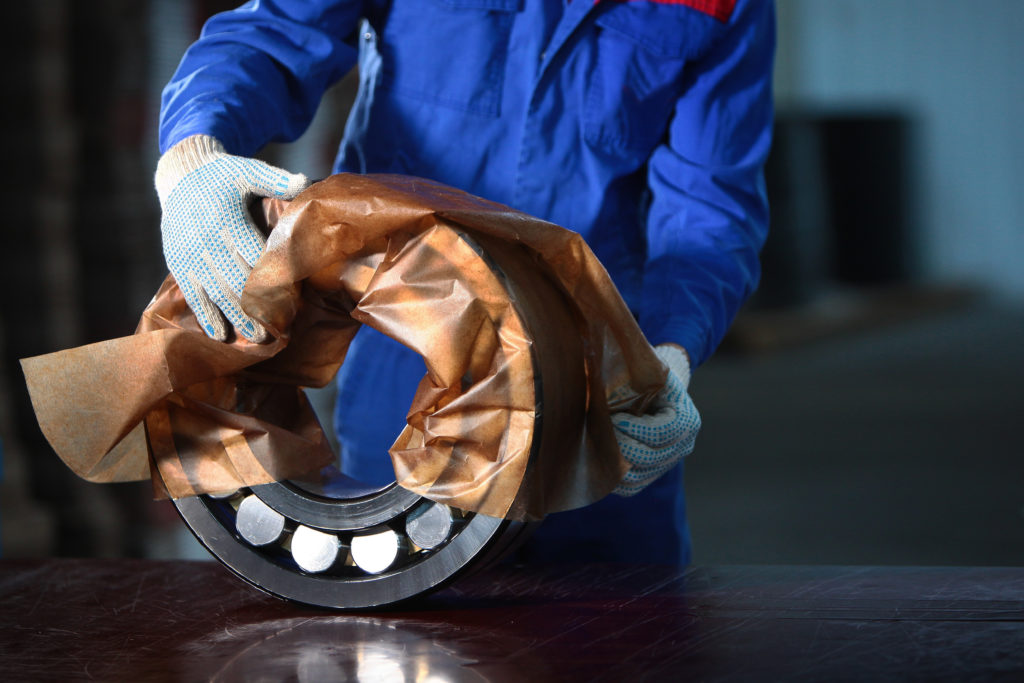
Once upon a time, there was a girl named Goldilube. She went for a walkthrough in a paper mill. Pretty soon she came upon a line shaft drive that was making a lot of noise.
On that line shaft drive were three bearings. Being a very curious (but thankfully certified) lube technician, Goldilube decided to have a closer look.
She examined the first bearing. It was emitting a loud churning sound, high temperatures and pressure, and a crusty-build up all around it.
“This bearing has too much grease!” she exclaimed.

When it comes to lubrication, more isn’t always better. Too much grease in the bearing cavity (over lubrication) causes a buildup of pressure as the rotating elements start churning and pushing the grease through the fluid film, out of the way. The increase in pressure and friction raises the temperature as the bearing must work harder to push the rolling element through the murky swamp of grease.
Excess heat can decrease the effectiveness of the lubricant and increase the rate of oil bleed, which is when the oil separates from the thickener. Over time, the high temps and increased rate of oil bleed will “cook” the grease thickener, creating a hard, crusty build-up that will hinder future lubrication attempts as it will block new grease from reaching the core of the bearing.
Then Goldilube examined the second bearing. It too was exhibiting a high operating temperature as well as a blueish brown discoloration. She also noticed an absence of grease pushing past the seal or split in the bearing housing.
“This bearing has too little grease,” she said.
 Lubrication protects the rolling elements in bearings from premature wear and damage. When a bearing isn’t getting enough lubricant (under lubrication), metal to metal contact, corrosion, and contamination often occur. If an under-lubricated bearing were to be disassembled, one would likely find denting or metal peeling on the raceway. Just like the effects of too much grease, not having enough grease can significantly shorten the life of a bearing.
Lubrication protects the rolling elements in bearings from premature wear and damage. When a bearing isn’t getting enough lubricant (under lubrication), metal to metal contact, corrosion, and contamination often occur. If an under-lubricated bearing were to be disassembled, one would likely find denting or metal peeling on the raceway. Just like the effects of too much grease, not having enough grease can significantly shorten the life of a bearing.
Finally, she examined the third bearing.
“This bearing’s grease amount is just right!” said Goldilube.

Goldilube noted that the bearing was not noisy, or hot, or running rough, had no leaking grease. She surmised that if this bearing were disassembled, she wouldn’t see any evidence of overheating.
Helpful tips for getting your bearing lubrication “just right”
Bearings need grease for one reason – to reduce friction. Many times, however, lubrication is done based on a calendar saying “It’s time!” (e.g. weekly, monthly, etc.) whether it’s truly needed or not. This is often the very thing that leads to over-lubricating bearings.
A better plan is to monitor, measure, and trend friction levels to know precisely when to lubricate.
There are ultrasound lube monitoring devices that provide not only audible feedback but also valuable condition indicators such as Maximum RMS, Peak dB measurements, and Crest Factor. For example, having Maximum RMS and Peak dB measurements provides insight into alarm levels and grease intervals.
Ultrasonic Crest Factor provides insight into the bearing condition in relation to its lubricant. Crest Factor also helps differentiate between bearings that need grease and ones that need to be completely replaced.
The importance of proper lubrication
While there are many potential causes of bearing failure including but not limited to contamination, improper mounting, and misalignment, studies indicate…
As much as 80 percent of bearing failures are caused by improper lubrication.
To truly keep industrial machinery and all its components operating at optimum efficiency, data is king. In this case, more is better! By having a condition based maintenance plan in place, you’ll get regular, reliable data not only on the condition of the machine’s lubrication but also on the condition of the machine itself.
As for Goldilube, she now stars in her own wildly successful television series – “Lube Tube.”
